2025 Range Rover Autobiography review

What is the true definition of luxury? If the answer is populating a list of specifications on a spreadsheet, then you could argue a $30,000 SUV offers genuine luxury appeal in today’s hyper-competitive new-car landscape.
However, the 2025 Range Rover Autobiography begs to differ. Billed as the original luxury SUV, the hulking British export continues to shape the definition of luxury, even in the modern era.
Cosseting its occupants as if they were the most important people on earth, the Autobiography has a knack of streamlining every task on- and off-road – all in the form of a 2.6-tonne SUV.
The latest 2025 iteration once again affirms luxury battle lines with not only its surfeit of nice-to-have equipment, but its prodigious comfort on the road and away from it. The lofty price tag means you’re unlikely to see another one in day-to-day traffic, either.
How much does the Range Rover Autobiography cost?
As you’d expect, stepping into a fully fledged Range Rover isn’t for the faint-hearted.
The ‘regular’ Range Rover line-up opens at $257,404, but the Range Rover Autobiography Standard Wheelbase (SWB) P530 driven here is priced at $330,349 before on-road costs.
Optional extras are de rigueur in this landscape, so there’s no surprise our test car wears an additional $20,000 in add-ons – ballooning the sticker price $349,169 before on-road costs.
At the base level, the Range Rover competes with the Audi Q8 (from $143,415 plus ORCs), BMW X7 (from $171,300 plus ORCs) and Mercedes-Benz GLS (from $189,100 plus ORCs), however the Autobiography quickly steps into Bentley, Mercedes-Maybach and Aston Martin territory – even more so when you look the pricier LWB versions.
What is the Range Rover Autobiography like inside?
If soft, quality furnishings plus heated and electrified everything match the definition of a luxury SUV (not to mention acres of space), you’ll be right at home in a Range Rover.
As one friend put it, the Autobiography’s interior even smells rich.
Our test car’s interior is adorned in an impeccably white Perlino leather package, which takes the luxe factor up another notch, as do the optional 24-way adjustable heated and cooled hot stone massage electric front chairs fitted to our test car.
Digging deeper, thick carpets and carefully stitched leather surfaces imbue the Autobiography with a sense of craftsmanship that lasts much longer than the first drive home. And there’s a certain pragmatism to its interior layout, too: it’s festooned with storage compartments and open cubbies.
Elsewhere, the 13.1-inch infotainment system is intuitive in its operation and pairs harmoniously with Apple CarPlay and Android Auto during our 800km stint. Ditto the head-up display and digital instrument cluster, which is clear and concise in its layout and navigation.
One complaint is around the lack of physical buttons and switchgear, which places added emphasis on the touchscreen for basic commands. The screen looks pretty but ultimately means you’re digging through sub-menus for simple processes like fan speed for the air-con.
Space is generous across both rows of seating in our test car, the rear seat fitted with window shades, cosseting chairs and a drop down middle console which controls the optional $6850 11.4-inch rear entertainment screens located on the back of the front headrests.
The rear seat neatly mirrors the quality of materials and craftsmanship of the front, while a flat floor space, airy proportions and an open glasshouse design ensure strong passenger amenity. The outer rear pews offer a breadth of recline angles so you can really stretch out on a longer journey – a la business class seats on an airline.
The Range Rover’s 818-litre boot offers adequate space for full-size suitcases or golf clubs and is accompanied by a full-size alloy spare wheel underneath.
What equipment does the Range Rover Autobiography come with?
Land Rover has thrown the proverbial kitchen sink at the Range Rover Autobiography in terms of equipment.
Standard gear includes 23-inch alloy wheels, four-zone climate control, keyless entry and start, an air purification filter, digital LED headlights with signature daytime running lights, puddle lights, front fog lights, powered tailgate, wing mirrors with auto-dimming and power/heating functionality, plus an electronically deployable tow bar.
Inside, there’s heated and cooled front seats, illuminated seat belt buckles, perforated semi-aniline leather surfaces, Ebony carpet and electronic rear sun blinds.
Infotainment comprises a 13.1-inch touchscreen display with Apple CarPlay and Android Auto, plus a separate digital display in the instrument cluster. Wireless phone charging, digital radio, a Meridian sound system and sat-nav are all inclusive, while connected services offer the ability to remotely control certain features of the vehicle.
The Range Rover Autobiography is backed by a five-year/unlimited kilometre warranty in Australia, as well as five years complimentary roadside assistance. Land Rover products aren’t exactly coveted for their aftersales reputation, but the Autobiography offers strong piece of mind with the standard inclusion of five years/130,000km complimentary servicing.
— Sam Charlwood
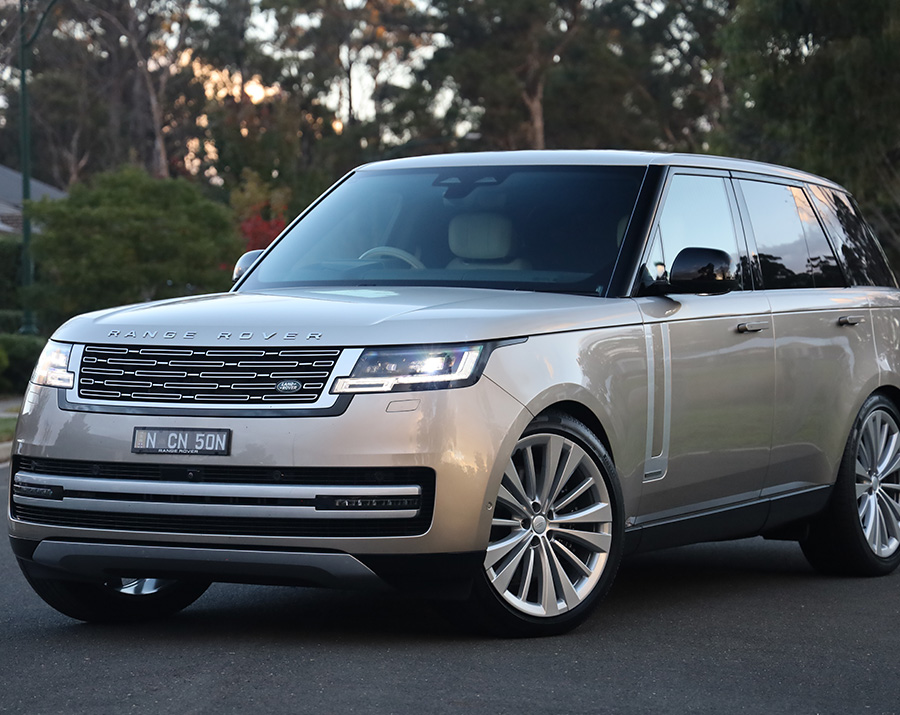
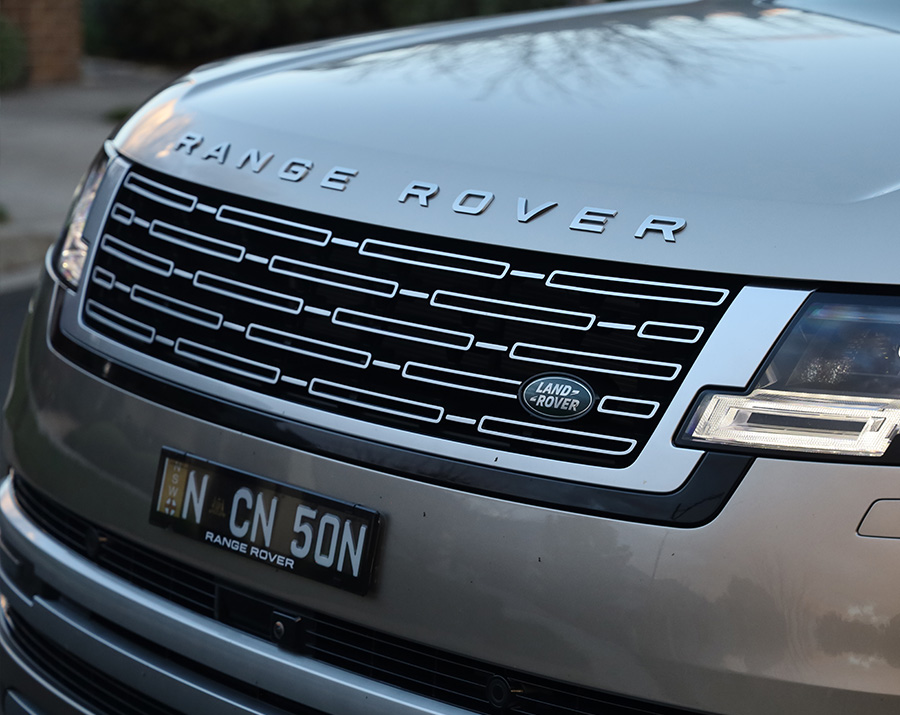
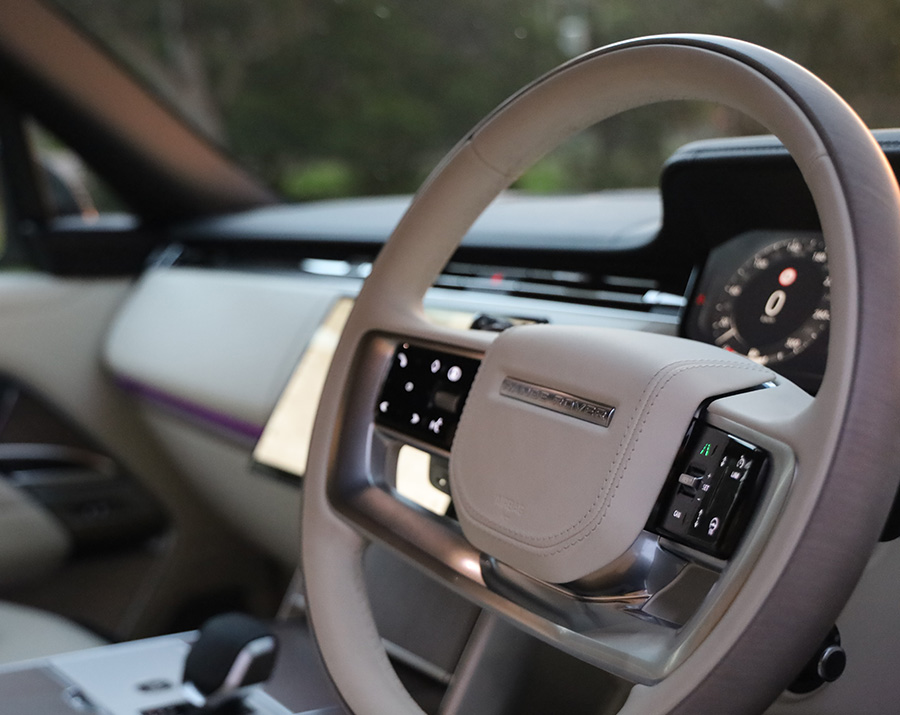
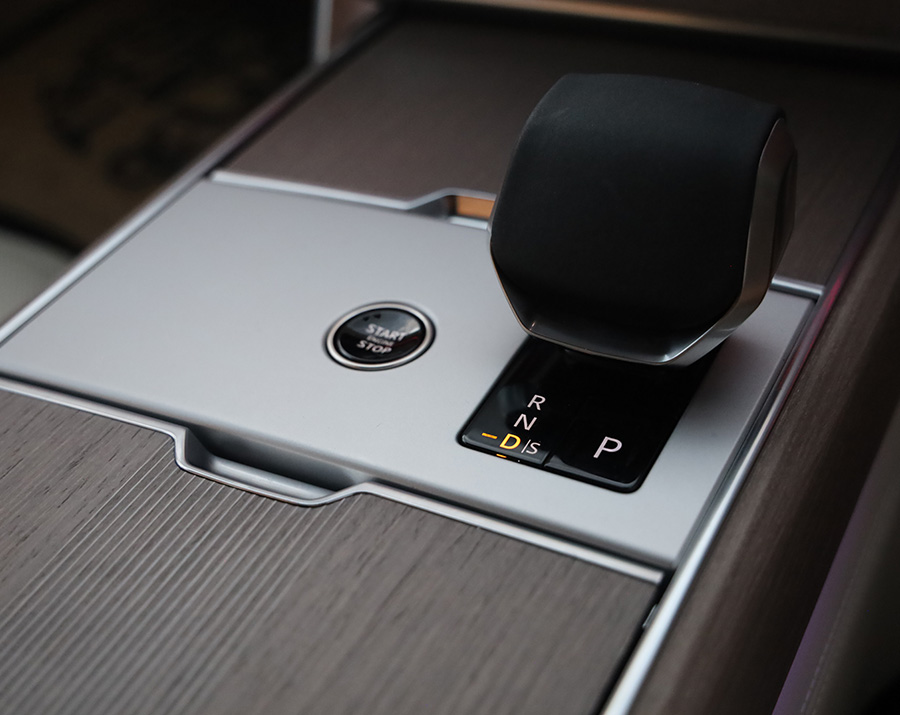
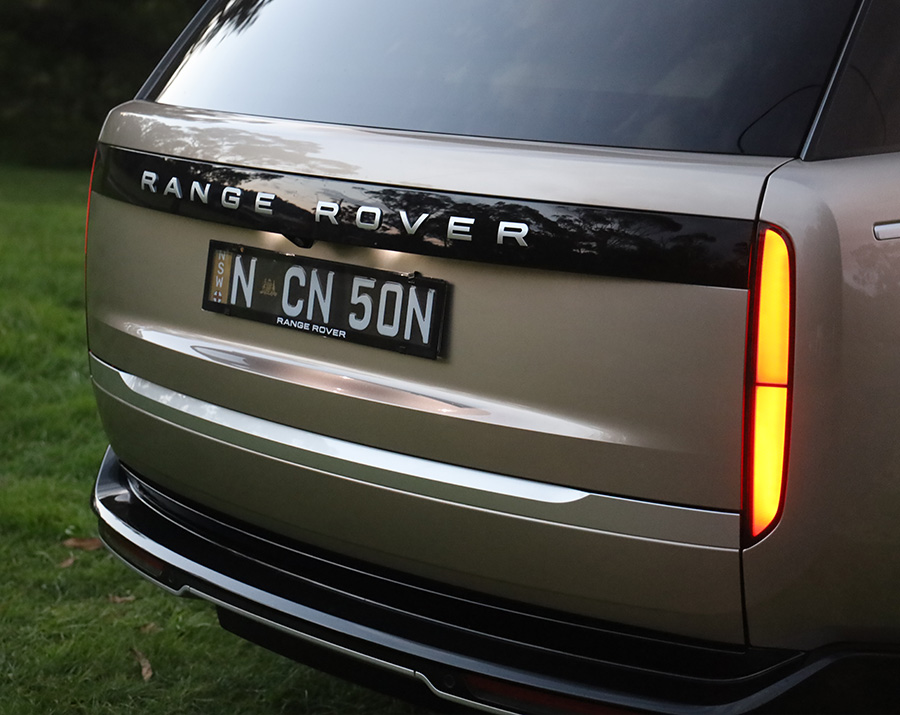
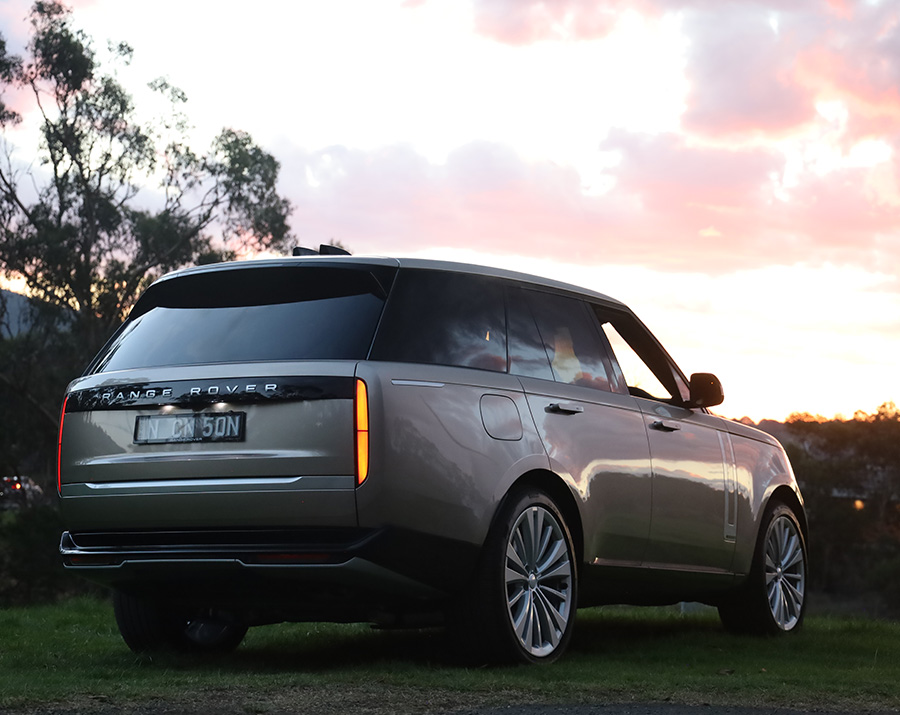
How safe is the Range Rover Autobiography?
If it’s safe enough to carry Her Late Majesty the Queen, you know you’re in good hands.
The Range Rover Autobiography safety suite includes: autonomous emergency braking, blind spot assist, adaptive cruise control with steering assist, driver attention monitoring, lane keep assist, rear cross-traffic alert, traffic sign recognition and an adaptive speed limiter.
Other nice-to-haves include a surround view camera, front and rear facing cameras, and a surround-view camera that can ‘see-through’ the car to help gauge tight spaces and off-roading situations alike, tyre pressure monitoring, headlight washers, and parking sensors front and rear.
The safety suite can be a tad overzealous in its operation – particularly with regards to speed limit monitoring. Thankfully you can tone down the interventions by two presses of a button on the steering wheel; the caveat is you’ll need to do so each time you restart the car.
The Range Rover Autobiography hasn’t been crashed tested locally by ANCAP, but comes with a maximum five-star Euro NCAP score (tested in 2022).
What powers the Range Rover Autobiography?
New school tech meets old school muscle under the bonnet in this application.
The P530 draws power from a 4.4-litre turbo-petrol V8 engine, outputting a formidable 390kW and 750Nm.
Sending drive to all four wheels via an eight-speed automatic, the V8 is capable of a nought to 100km/h claim of 4.6 seconds – a serious feat given the Autobiography’s 2.6-tonne kerb weight.
Fuel use is pegged at 11.1L/100km claimed on the combined cycle. A mild hybrid system is trumpeted with respect to decent fuel use, but we’d put greater emphasis on the clever fuel systems and electronics.
Elsewhere, the drivetrain offers serious off-road capability in the form of a two-speed transfer case (high range and low range 4WD), an electronically controlled rear differential, electronic air suspension, Land Rover’s Terrain Response 2 suite of driving modes, plus a 900mm water wading depth.
The standard fitment of four-wheel steering also effectively shrinks the turning circle of the Range Rover at low speeds, turning in the opposite direction of the front wheels. Moreover, at higher speeds, the rear wheels turn in the same direction as the front wheels to improve agility.
Towing capacity is listed at 3500kg braked, complemented by a tow ball joint which automatically deploys from underneath the rear bumper at the press of a button.
What is the Range Rover Autobiography like to drive?
Like the rest of the car, the Range Rover Autobiography driving experience is unapologetically prefaced by its luxury bent.
There’s an inherent lightness to the controls that makes simple operations effortless, plus umpteen features that streamline what would otherwise be cumbersome pursuits, like navigating its hulking 5.0-metre proportions through tight spaces. Top of the list here are the surround-view cameras and the rear-wheel steering, not to mention a one-touch button located on the door card which lowers the vehicle to its most car park-friendly setting, a purported 20mm lower than the 1870mm standard height.
The Autobiography has no right to ride so smoothly on 23-inch wheels at low speeds, the air suspension providing a soft buffer with all but the harshest imperfections underneath. It’s a decidedly quiet and cosseting affair, so serene you could almost hear a whisper-level conversation from the rear seat. Sharper bumps reflect through the chassis with an occasional thud, but there’s no crashing to speak of and body control is resounding.
Those traits are juxtaposed in some respects by the heady 390kW/750Nm V8. With those outputs materialising from 5500rpm and 2000rpm respectively, there is effortless go-forward everywhere, all underlined by a distinct yet tasteful V8 bellow. However, when called on, the V8 offers a lusty and satisfying response right through to its circa 7000rpm cut-out, well beyond the 4.6sec 0-100km/h brochure claim. It’s addictive stuff.
A smooth-shifting eight-speed automatic plays its part in proceedings here, too, offering neatly timed shifts and a strong spread of ratios which allow playful driving or almost idle-resting highway passage alike.
Although you wouldn’t buy a V8 Range Rover for fuel consumption, the Autobiography is more efficient than you might expect. We average 12.5L/100km in a mix of conditions, and as low as 8.8L/100km on a highway run.
Where the Range Rover Autobiography could lose some prospective types is with its dynamism, which is acutely aimed for comfort. Not that Range Rover cares. In this instance, we reckon the smaller Range Rover Sport is potentially a better pairing – more agile, easier to gel with and not too far off in the comfort stakes either. Horses for courses.
That said, torque vectoring and clever electronic aids underneath ensure voodoo-like handling and resplendent comfort for such a big bus, especially one which cossets its occupants so convincingly.
The side we’re yet to explore in the current-generation Range Rover is its off-roading ability. Underneath its flush exterior metal, there’s a credible suite of off-road hardware available – should you dare.
The Open Road's take on the Range Rover Autobiography
The number of car makers spruiking luxury vehicles might be unprecedented, however the Range Rover Autobiography remains a yardstick for comparison. Admiring its immaculate panel gaps and shut lines one last time before tossing back the keys is a fitting reminder.
Ultimately, we reckon the slightly smaller Range Rover Sport is probably a more appealing option for most, with its smaller footprint, greater breadth of performance and added ease of use.
That said, for the most pampering experience it’s hard to look past the Autobiography – and from a luxury perspective, this probably tells you all you need to know. Fifty five years of heritage is hard to look past.
What we liked
- Still the benchmark in SUV luxury and design, despite no shortage of competition
- Effortless V8 performance in regular conveyance
- Clever electronics streamline the Autobiography’s hulking dimensions in tighter situations
What could be better?
- Prohibitively expensive, especially when a Range Rover Sport is half the price
- The safety suite can be a tad overzealous in its factory settings
- A lack of simple interior switchgear complicates basic operations






